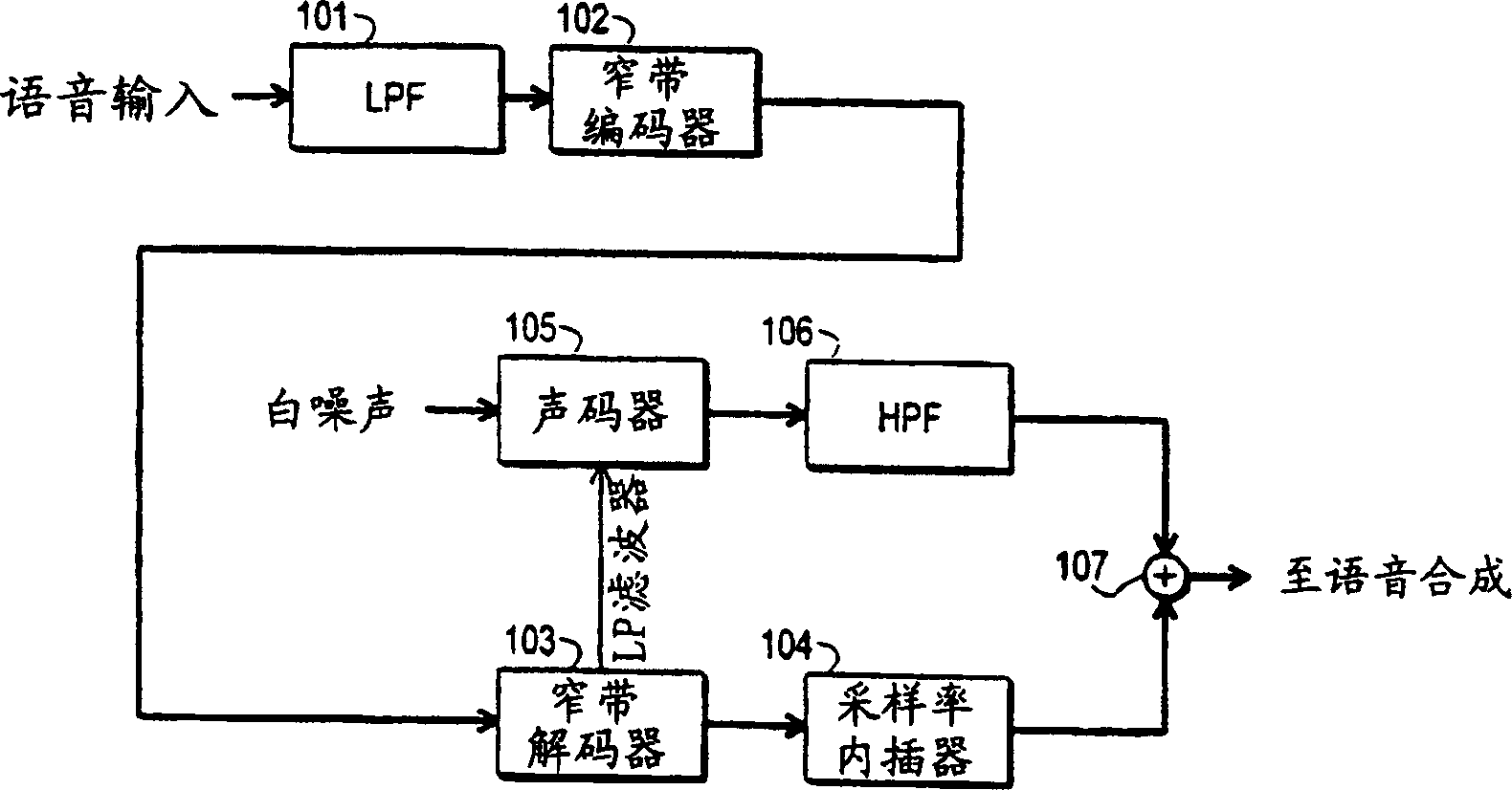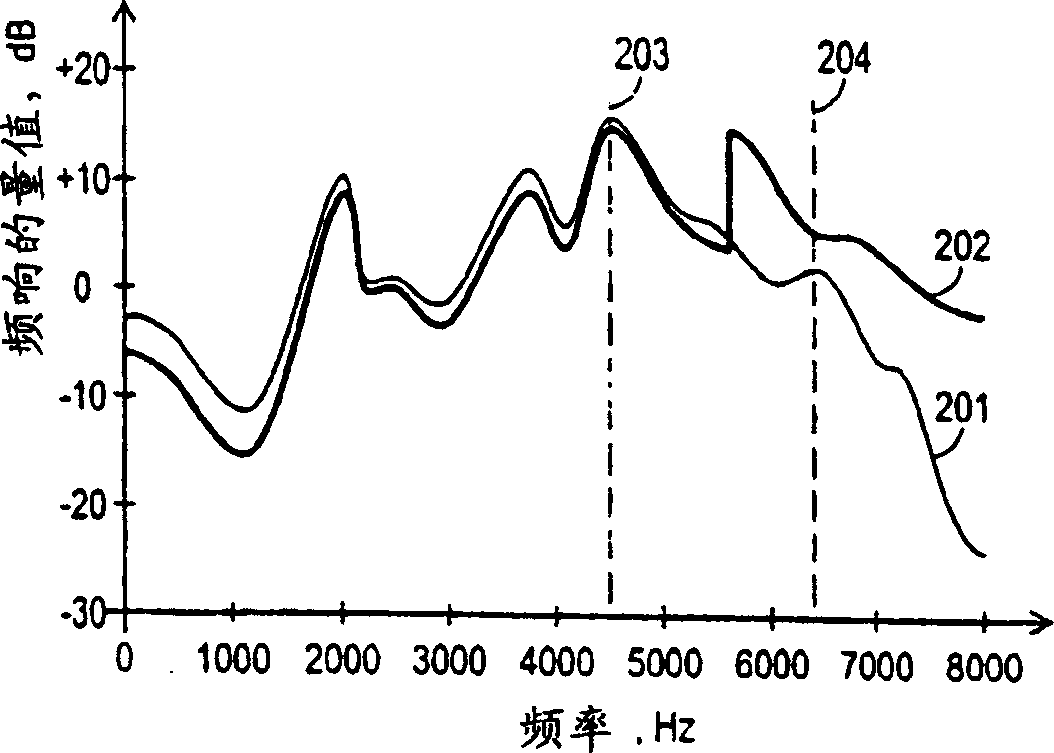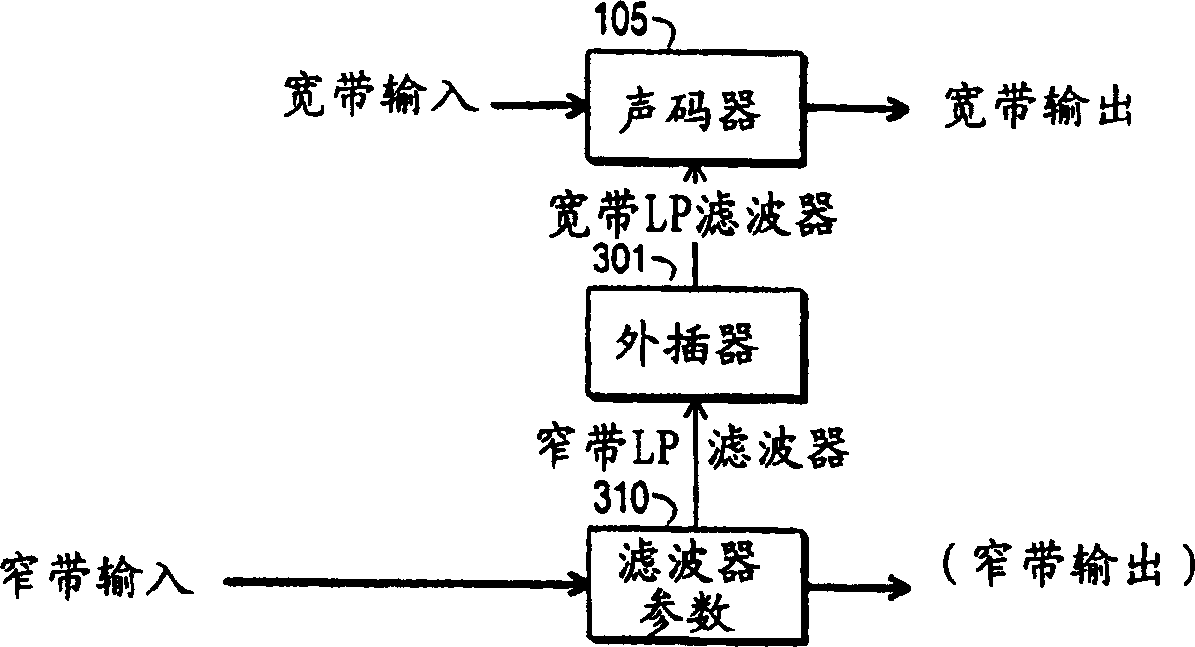Speech decoder and method for decoding speech
A technology of vocoder and speech processing, which is applied in the field of decoding digitally encoded speech, and can solve problems such as large memory, increased time, and great inflexibility
- Summary
- Abstract
- Description
- Claims
- Application Information
AI Technical Summary
Problems solved by technology
Method used
Image
Examples
Embodiment Construction
[0048] Figures 1 and 2 have been described in the description of the prior art, so the following description of the invention and its advantageous embodiments will focus on Figures 3a to 6 superior. The same reference numerals are used for similar parts in the drawings.
[0049] Figure 3a Used to illustrate the decimation of the parameters of the narrowband LP filter in the decimation block 310 using the narrowband input signal. The narrowband LP filter parameters are taken to an extrapolation block 301 where extrapolation is used to generate the corresponding wideband LP filter parameters. These parameters are taken into the vocoder 105 . A vocoder uses some kind of broadband signal as its input. Vocoder 105 generates wideband LP filters from these parameters and uses them to transform the wideband input signal into a wideband output signal. Decimation block 310 also provides an output, which is a narrowband output.
[0050] Figure 3b show how to Figure 3a The princ...
PUM
 Login to View More
Login to View More Abstract
Description
Claims
Application Information
 Login to View More
Login to View More - R&D
- Intellectual Property
- Life Sciences
- Materials
- Tech Scout
- Unparalleled Data Quality
- Higher Quality Content
- 60% Fewer Hallucinations
Browse by: Latest US Patents, China's latest patents, Technical Efficacy Thesaurus, Application Domain, Technology Topic, Popular Technical Reports.
© 2025 PatSnap. All rights reserved.Legal|Privacy policy|Modern Slavery Act Transparency Statement|Sitemap|About US| Contact US: help@patsnap.com



